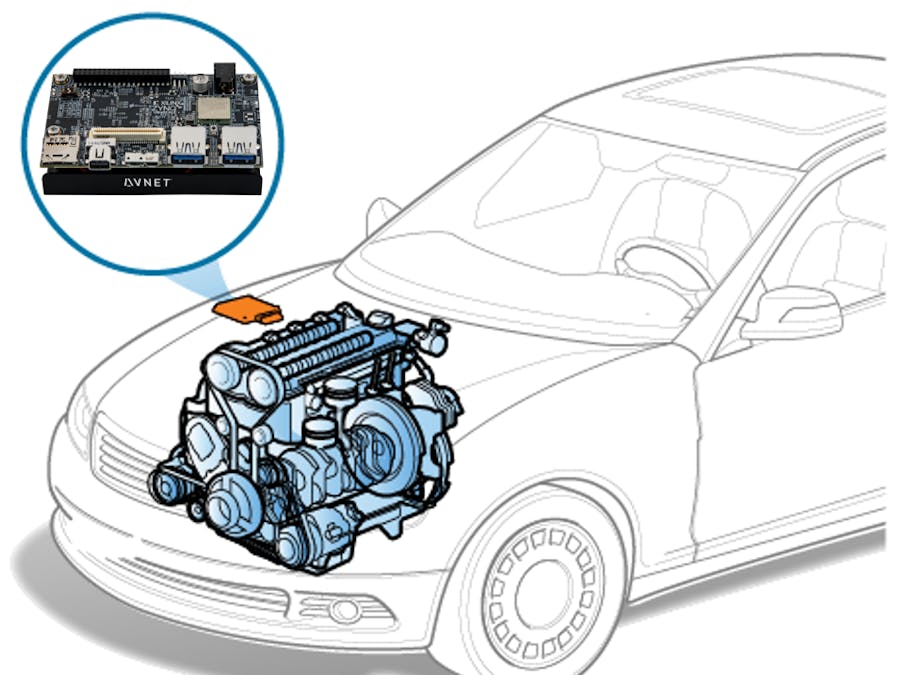Engine management is almost never thought of as a way of gaining better fuel economy. But in these days of ever-increasing fuel prices, electronic techniques can be used very effectively to improve fuel economy. And it’s a benefit that you can enjoy every minute that you’re driving - not just when you put your foot down. And also it is a great advantage implementing ECU by using an FPGA because it can be easily reconfigured.
A method is provided for controlling an internal combustion engine on a cycle-by-cycle basis. The method includes: maintaining training data used to identify a mapping function for the engine; populating a buffer with adaptive data for a given cylinder, where the adaptive data are measures of the inputs and the output of the mapping function that were captured during a number of recent operating cycles of the given cylinder; combining training data for the mapping function with the adaptive data; identifying the mapping function from the combined data set using a weighted least squares method; predicting a combustion feature of the given cylinder in the next cycle using the mapping function and measures of the inputs during the present cycle; and controlling the engine based in part on the predicted combustion feature of the given cylinder in the next cycle using one or more actuators.
Legacy Engine Control UnitHere is just a small list of things we control to run this engine. These parameters and components helps to make right decisions regarding combustion engine.
- Injection duration
- Injection timing
- Injection fuel pressure
- Low pressure fuelpump
- Ignition timing
- DBW valve
- Tumble valves
- Short/long runners valve
Normally legacy ECU has following I/O devices to function the whole management system.
- 12 Injector outputs, which can be used as aux outputs instead
- -8 Ignition outputs
- -8 Aux outputs, which can drive high or low
- -8 digital inputs, with configurable internal pull-up / pull-down resistors
- -5 trigger inputs, configurable as reluctor or digital
- -4 VSS or turbine speed inputs, configurable as reluctor or digital
- -16 general purpose analogue inputs, of which 4 can be configured for temperature sensing, and 2 are suitable for oxygen sensors
Re-mapping the mixtures of a car that no longer has the oxy sensor input can be done with an interceptor or ECU software re-map. You’ll probably run around 14.7:1 at idle but at light loads you can run quite a lot leaner than this with no engine misbehaviour. How lean you can go depends on a host of things including gearing, engine combustion efficiency, etc, but certainly ratios of around 16:1 are usually quite tolerable. In some cars, at light loads you can go as lean as 20:1. You can even enact your own lean cruise mode, by watching carefully the load at which you’re travelling at 100 km/h (or whatever) and then leaning out a little at just these load sites. Too much and you’ll get a flat spot, but again with careful tuning, it’s possible (especially when it’s being done on the road) to go leaner by at least a ratio and sometimes more.
Taking this approach means you can set total engine mixtures from as lean as (say) 16.5:1 to as rich as 12.5:1, depending on the load and rpm conditions. Significantly, the car will spend most of its time at the leaner-than-standard mixtures, making a real and measurable difference to fuel economy.
Machine Learning approachMachine learning provides a computationally efficient way to capture complex cycle-to-cycle combustion patterns while simultaneously avoiding explicit knowledge of the underlying mixture state and composition (provided an appropriate abstract mapping function is chosen). While there are clearly benefits to a machine learning approach, a key issue is that machine learning is data driven, and relatively large quantities of data are needed to adequately cover large dimensional spaces.
Zynq MPSoC which provides both Arm processor cores and programmable logic. The heterogeneous device enables us to correctly architect a solution which achieves the balance between power and performance, crucial parameters for edge-based applications. Xilinx PYNQ can be used to implement machine learning algorithms.
When we want to accelerate neural networks into programmable logic, fixed-point implementations, e.g. fixed-point eight, are easier to implement and can be made to offer similar performance for lower power. As many machine learning applications are edge-based, power efficiency is critical.
It can be seen FPGA architectures like the Xilinx Zynq provide an efficient platform for compute intensive ECUs and configurable gateway architectures for future vehicular applications and interconnect. FPGAs like partial reconfiguration can enable novel mechanisms for consolidating non-concurrent functions and hardware-level fault tolerance. The management of low-level operations associated with partial reconfiguration are abstracted from the application and are managed by the extensions on the network interface, making them appear as a feature of the platform to the application designer. Eventually this project should be developed furthermore to gain the real advantage.














Comments
Please log in or sign up to comment.